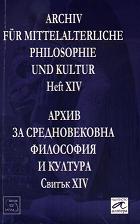Pope Benedict XVI’s Use of the Byzantine Emperor Manuel II Palaiologos’ Dialogue with a Muslim Muterizes: The Scholarly Background
Pope Benedict XVI’s Use of the Byzantine Emperor Manuel II Palaiologos’ Dialogue with a Muslim Muterizes: The Scholarly Background
Author(s): John A. DemetracopoulosSubject(s): Philosophy
Published by: Издателство »Изток-Запад«
Keywords: Pope Benedict XVI; Byzantine philosophy; Manuel II Palaiologos; Muslim Muterizes; scholarly background
Summary/Abstract: A lecture delivered in 2006 by pope Benedict XVI at the University of Regensburg became famous because of a reference of the speaker to the allegedly different ways Christians and Muslims were supposed to view the duty of propagating religious faith. A passage from the Byzantine emperor (1391-1425) Manuel II Palaiologos’ (1350-1425) Dialogue with a Certain Persian, who Ηeld the Οffice of Muterizes, in Ankara of Galatia was quoted, where Muslims from their very appear ance on earth up to that time were accused of regarding violence against “non-believers” as a legitimate means of disseminating their faith. In contrast, it was held by an appeal to some of Palaiologos’ statements on the rational character of Christian morality (an appeal that also made Palaiologos’ text famous for a while), Christianity excluded violence against other religions from its mentality, partly because, having been blessedly cultivated from almost its very beginnings within a culture imbued with the «Hellenic (i.e. the Greek philosophical) spirit», accepted «reason» as a substantial criterion for judging the morality of human acts, religious behaviour included, and regarded God’s will and His commandments as e limine in conformity with reason. It is not my intention, of course, to be entangled in any inter-religious discussion (which may have been the aim of the Pope’s reference to Manuel II, as the very date of the lecture suggests). Instead, I would like to comment on the validity of the scholarly material that formed the background to the way Palaiologos’ text was used in that lecture.
Journal: Архив за средновековна философия и култура
- Issue Year: 2008
- Issue No: 14
- Page Range: 264-304
- Page Count: 41
- Language: English
- Content File-PDF

